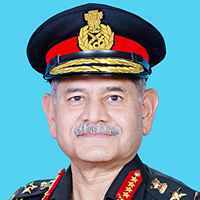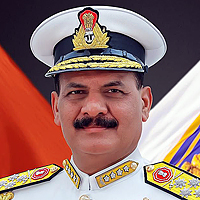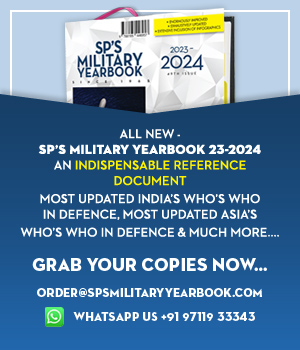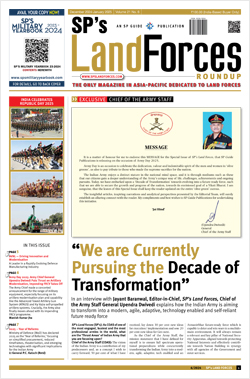INDIAN ARMED FORCES CHIEFS ON OUR RELENTLESS AND FOCUSED PUBLISHING EFFORTS

The insightful articles, inspiring narrations and analytical perspectives presented by the Editorial Team, establish an alluring connect with the reader. My compliments and best wishes to SP Guide Publications.

"Over the past 60 years, the growth of SP Guide Publications has mirrored the rising stature of Indian Navy. Its well-researched and informative magazines on Defence and Aerospace sector have served to shape an educated opinion of our military personnel, policy makers and the public alike. I wish SP's Publication team continued success, fair winds and following seas in all future endeavour!"

Since, its inception in 1964, SP Guide Publications has consistently demonstrated commitment to high-quality journalism in the aerospace and defence sectors, earning a well-deserved reputation as Asia's largest media house in this domain. I wish SP Guide Publications continued success in its pursuit of excellence.
- MoD initiates comprehensive review of Defence Acquisition Procedure 2020, pushes for defence reforms
- G7: The Swansong
- Kalinga Connect: South Asia to Polynesia
- Must Credit DRDO for Operation Sindoor, now what is next for defence R&D?
- The layered Air Defence systems that worked superbly, the key element of Operation Sindoor
- Operation Sindoor | Day 2 DGMOs Briefing
- Operation Sindoor: Resolute yet Restrained
Special Forces Training School Gets a Cutting-Edge Vertical Wind Tunnel
In a landmark move to augment the training infrastructure of special forces and combat free-fallers, the Special Forces Training School (SFTS) at Bakloh, Himachal Pradesh, gets Indian Army's first Vertical Wind Tunnel (VWT). General Manoj Pande, Chief of the Army Staff, virtually inaugurated the facility. The state-of-the-art wind tunnel is set to refine the Combat Freefall (CFF) skills of armed forces personnel.
As part of the ongoing transformation of the Indian Army, technology is being infused into the training methodologies. Installation of a VWT is also a step in that direction. Functioning as a freefall simulator, the VWT creates a column of air at specific velocities, orchestrating different CFF conditions. The system offers a controlled environment, enabling trainees to enhance their skills by simulating real-life freefall conditions.
The VWT's integration into the CFF training curriculum at SFTS brings forth numerous pay-offs. The system simulates varied freefall scenarios which is crucial in assessing individual reactions to numerous situations in an airborne operating environment. It reduces potential instability in the air and during parachute deployment thereby assisting trainees to get used to free-fall conditions. The VWT is not only beneficial for beginners but also an exceptional resource for delivering advanced training to seasoned free-fallers and CFF instructors.
Installation of the first VWT is aligned with the current impetus given to modernising the training infrastructure in the Indian Army. This project, a first of its kind in the Indian Army, will deliver simulated training on combat freefall to the special forces. It is poised to greatly enhance the operational readiness of the future-ready Indian Army, ensuring that the special forces are fully prepared to tackle contemporary challenges of current and future battlefields. It promises faster and more precise training results.





